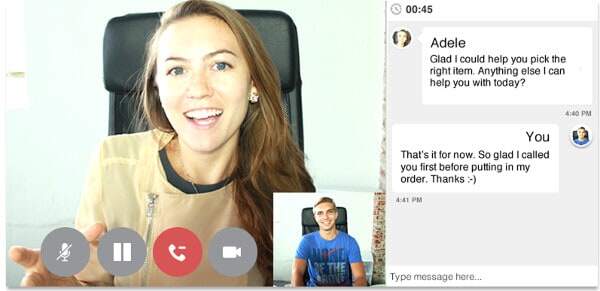UPDATE: net2phone acquired LiveNinja in 2017.
Marketplaces and click-to-call wrapped in one company.
LiveNinja is one of these companies that I’ve been following from afar for quite some time. Probably since I began monitoring WebRTC. At the time, they used Flash, but since then, like many others they have shifted towards WebRTC.

I had an interesting chat with Emilio Cueto, CTO and Co-Founder at LiveNinja about their new service Katana. I wanted to share that conversation with you here.
What is LiveNinja all about?
LiveNinja is about creating and sharing in unique experiences that add value to your personal and professional life. We offer our community of experts a way to monetize their knowledge and provide our users with an outlet to learn new skills by using a real-time, fully immersive platform. It’s all about making others instantly accessible to you in a way that is mutually beneficial. This face-to-face, intimate experience is impossible to achieve using any other real-time communication tool and something that other chat services do not take into account.
You started a new service called Katana. Can you tell me a bit more about it?
Katana is an extension of LiveNinja as it focuses on experiences, but specifically for businesses. Katana allows businesses to engage with their customers in a more human way by giving online visitors a direct line of communication to a brand’s representative. We provide companies with all the tools they need to more effectively interact with their customers directly on their website. With a click of a button, a customer can get the help they need, while still remaining active on the site. We’ve found that face-to-face communication improves the customer experience and positively affects conversions and brand loyalty.
You have gone off and decided to build Katana from the ground up. Why was that?
At LiveNinja, we pride ourselves in thinking outside the box. The question is never “can we do this?”, but rather “how can we do this?”. With Katana, we have a very long list of features listed in our pipeline. We had to be sure we would be able to get through this list (and account for any other features that came up), without having to rely on any external dependencies. The only way to truly do that is to build it yourself!

What signaling have you decided to integrate on top of WebRTC?
We decided SIP was the best option for various reasons. One of the things that is so great about Katana is that you can start a call on the Web, transfer to another device, and even transfer to a traditional PSTN line such as your home or cell phone. We saw a gap between web communication and traditional endpoints in a clean user interface. In order to bridge the gap, it made perfect sense to use SIP, as it has been tried, tested, and widely used for many years.
Backend. What technologies and architecture are you using there?
All users are assigned an extension and registered to a pbx. This allows us to perform many of the same interactions users are already accustomed to with traditional telephony. We handle media via an in-house MCU stack which can scale up/down as needed. Because of this, we are able to handle calls (and negotiate different codecs) not only from a traditional website, but also from many other devices, including sip clients or even incoming PSTN calls. It opens up new opportunities for cool features to be developed and deployed.
Where do you see WebRTC going in 2-5 years?
I think we will continue to see more development in the space and will definitely come across more interesting use cases. I think most people familiar with the tech can agree that RTC is the future. The discussions between ORTC vs WebRTC will eventually be ironed out (and probably merged in the long-term). RTC is here to stay and will continue to grow into mainstream. You can already see interesting projects arising all over github and the web in general. I’d like to see someone dedicate time to perfecting an RTC version of the SMPTE time format. That would be cool and totally disrupt the audio recording/film editing industry!
If you had one piece of advice for those thinking of adopting WebRTC, what would it be?
Don’t just build another video chat application. Building a video chat application with WebRTC is the equivalent of a “Hello World” app in my eyes. Think of what it is you want to accomplish and how WebRTC can help you get there. What are you trying to solve? What kind of experience are you looking to create for your potential users? Let WebRTC be the stepping-stone that helps you build out your idea. WebRTC is only a part of the big picture, not what you are selling.
Given the opportunity, what would you change in WebRTC?
I’m not sure what I’d change about WebRTC itself, but I would definitely like to see more standardization across browsers. For example, the permissions prompt varies across not only each browser, but each OS as well. This is simply a result of developing on something that is not fully mature yet, though its getting closer. The more we develop and use this technology commercially, the more we can push the envelope forward and force these types of standardization to become possible.
What’s next for LiveNinja and Katana?
We’re excited by the seemingly endless possibilities the future holds. We are going to be completely rebuilding the LiveNinja marketplace, with Katana’s technology at its core. This will come along with a complete redesign of LiveNinja.com and bring the same type of intercommunication between devices to each LiveNinja experience. This, along with the many other features we have in our pipeline, definitely makes it an exciting time for us!
–
The interviews are intended to give different viewpoints than my own – you can read more WebRTC interviews.
